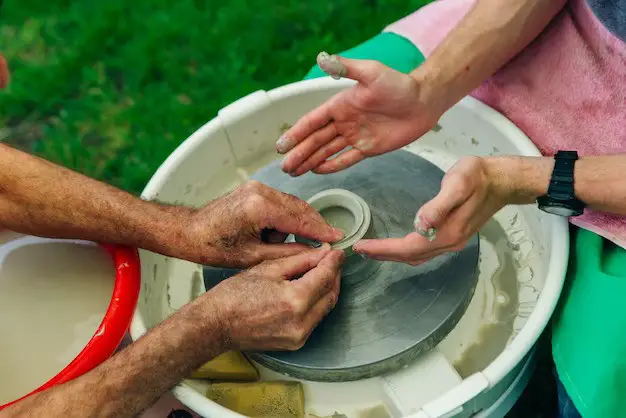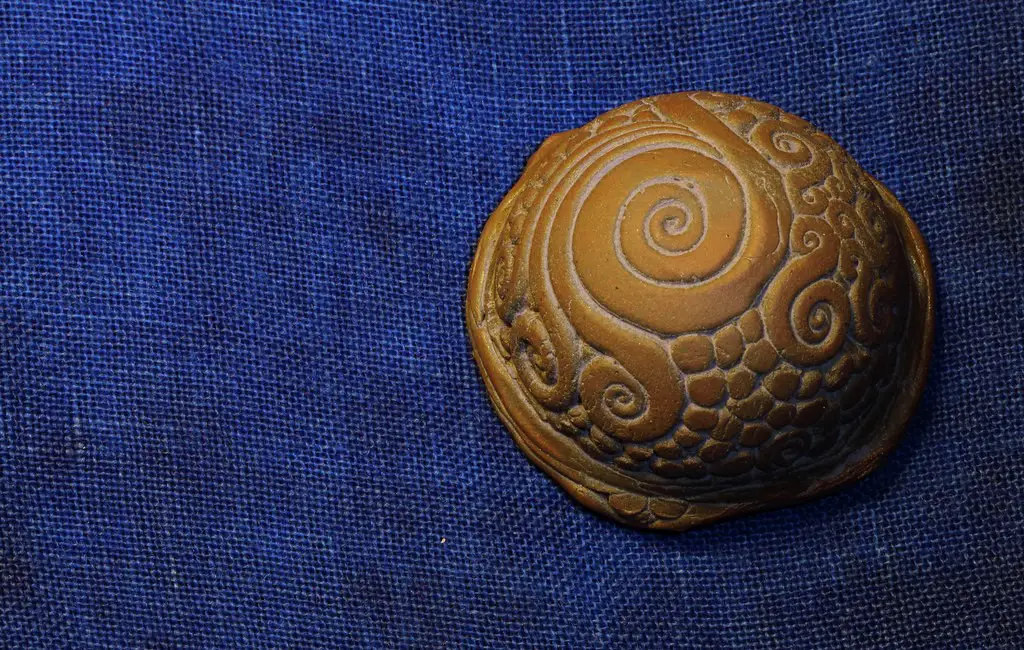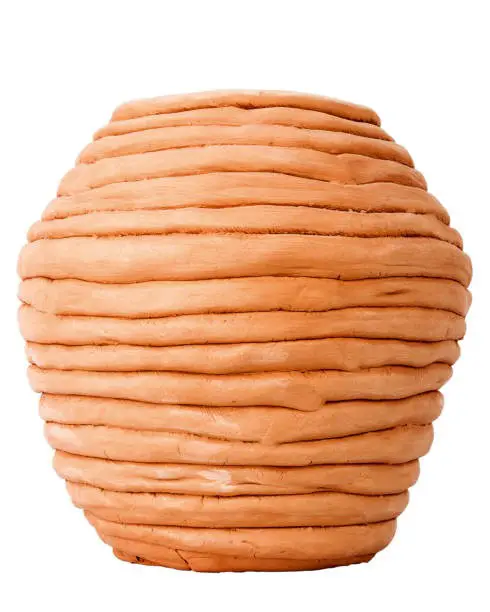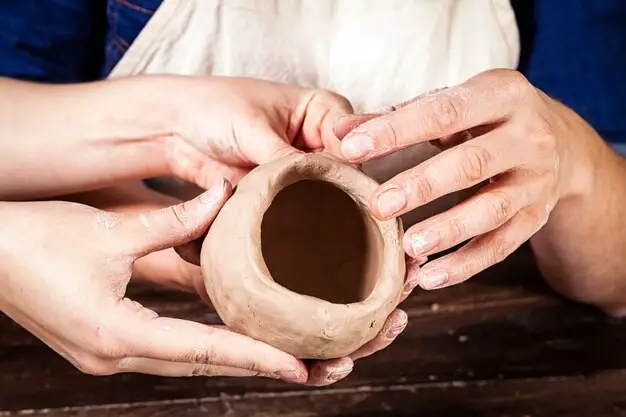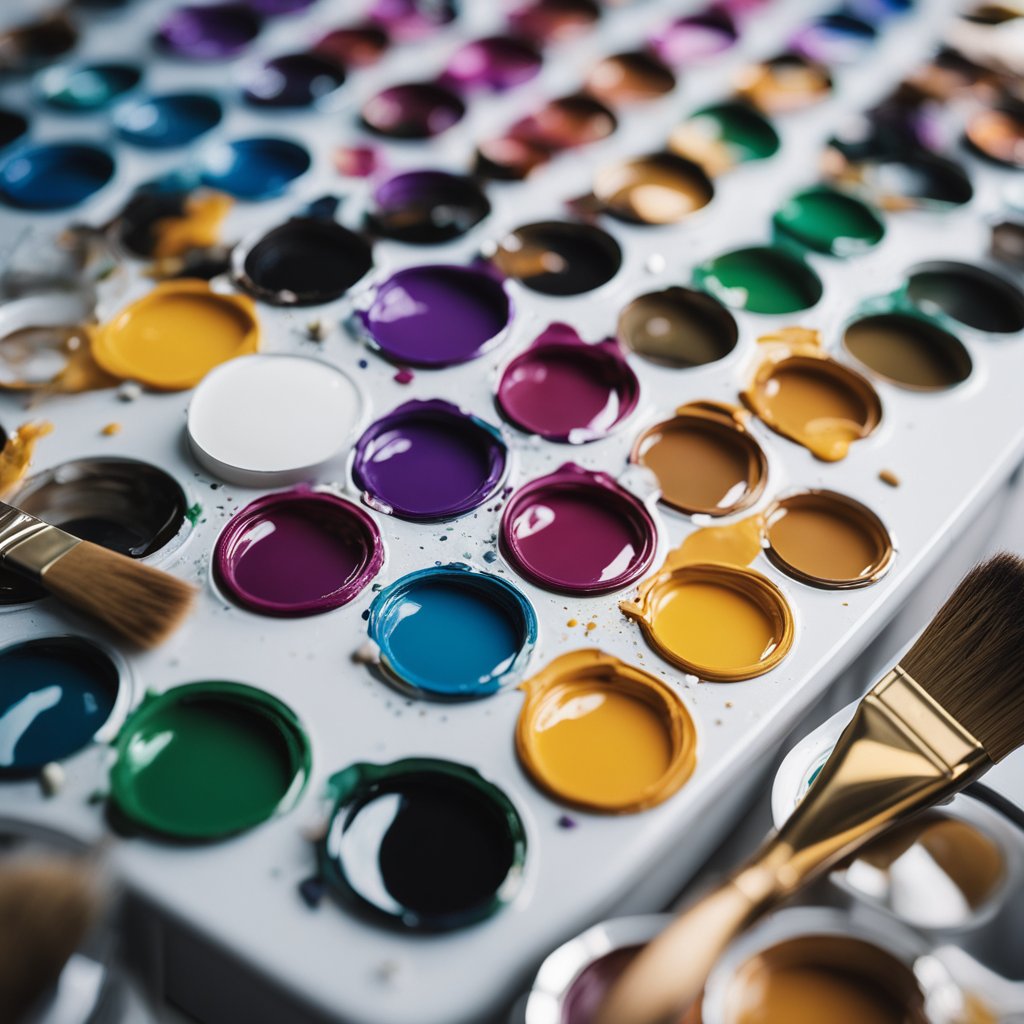Ceramic pottery ware has a shiny surface which causes most to assume that it cannot be spray painted and the only way to introduce color is through glaze firing. However, this is far from the truth. Ceramics can just as easily be painted with spray paint, and all you need to do is follow a few extra steps. But why do beginner potters feel that ceramic cannot be spray painted? And how can you spray paint your ceramic pottery the right way? Let us check out the tips and techniques!
Why Does Spray Painting Ceramic Pottery Require Extra Efforts And Caution?
Ceramic pieces tend to be a great work of art, especially when colored the right way. Spray paint is versatile and can stick to most surfaces. However, one might wonder if it is just as true for slippery smooth, and shiny surfaces like ceramic or glass.
First off, you need to find out if your ceramic pottery is glazed or unglazed. So, why is this important? Glazing your ceramic pottery doesn’t just impart strength, color, and waterproofing. It also makes the rough surface smooth and shiny. Your glaze can either be glossy or matte. As obvious from the name, glossy glazes create beautiful reflective, and shiny surfaces. However, matter glazes tend to keep the shine on the down low. Yet the smoothness is just as it is with glossy glazes.
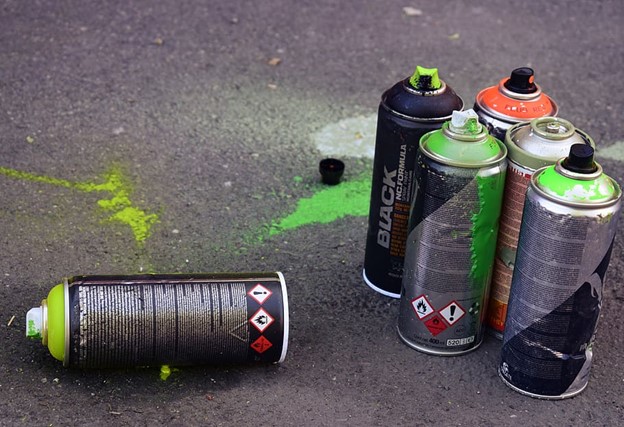
So, anything that is smooth to the touch will have difficulty allowing the paint to stick to the surface. Moreover, it is no longer porous, and hence the paint cannot seep into the material. Therefore, it can be a tad difficult to spray paint ceramic pottery.
First off, if you haven’t yet glazed your ceramic pottery, you can go ahead and use spray paint on it. However, if yours is a glazed ceramic pottery (glossy or matte), you need to opt for an additional step before you can start painting.
How To Make Spray Paint Stick To Glazed Ceramic Pottery?
Whether you wish to go bold with color or want to keep the colors subtle, you can do anything with spray paint. However, you first have to prep the surface to allow the paint to stick. So, how would you go about doing that? Let us learn the steps here!
1. Sanding Is The Key:
Sanding the ceramic pottery surface is crucial before spray painting. Use 100-grit sandpaper and rough up your ceramic’s surface. This provides the paint proper surface to stick to. Make sure you do not scrub the surface too hard, or the final output will look ugly and dented. Once you are done sanding the surface, use a dry sponge to shake off the ceramic dust remnants that come from sanding. If possible, you can also wash the surface to remove the dust and wait for it to dry before using spray paint.
2. Use A Primer:
You can either opt for a spray primer or directly use a combination spray paint that comes loaded with a primer. These two-in-one formulas can save time and effort. However, the paint+primer combination can be a tad on the costlier side. So, if you are a beginner artist, you can purchase the spray paint and primer separately. Shake the can before you spray the ceramic piece from all sides. Next, place a cardboard box with one side open to ensure that the primer sticks well to the surface and doesn’t spread around due to any wind or gust of air.
3. Spray Paint From A Distance:
As you did with a primer, you need to shake the spray paint as well. Depending on how deep you want the color to be, you can opt for multiple layers of spray. Once you apply the first coat, make sure you let it dry for at least 5 to 10 minutes. Doing so will help the paint adhere to the surface before another layer is added.
If you add a second or third layer of paint to the ceramic pottery surface, it will start dripping and form globules that will look ugly after drying up. If you are using a semi-gloss or gloss spray paint, there isn’t a need to seal the surface after the paint dries up. However, if you wish to seal the item, you can use the Mod Podge Spray Acrylic Sealer with a non-yellowing, quick-drying, and no-run formula.
An ideal distance rule to follow is to spray at least 10 inches from the piece. This ensures that you don’t have to risk paint runs.
Spray Painting Mistakes With Ceramic Pottery
When you spray paint your ceramic pottery, several things can go wrong. Of course, paint is pricey, and you wouldn’t want your hard work to go to waste. So, the key is to keep these pointers in mind to avoid unnecessary paint wastage.
1. Timing Is Crucial:
A key factor with spray painting your ceramic pottery is to ensure that you give your piece enough time to dry between multiple coats. A paint job that is rushed tends to be the biggest reason for poor finishes. Depending on the type and brand of paint you have used, the drying time can vary. So, make sure you read through the instructions and give that much time between two coats.
2. Mask Off Sections You Don’t Want To Be Painted:
If you are working on painting a pattern with your spray paint can, the key is to mask off those sections. You can make use of scrap papers pasted onto these areas or use painter’s tape. This will help you get clean and perfectly sharp lines.
3. Avoid Dimpling:
It is not uncommon for a spray-painted ceramic surface to have dimpling issues. These dimples or small pinholes happen because you might have applied your primer way too thick and didn’t allow the first paint coat to cure properly. If this happens, you can sand the paint completely and clean off the particulate from the surface. Now, reapply your primer and wait for the appropriate amount of time in thinner layers.
4. Webbing/Cracking:
Webbing and cracking happen if there is a reaction that happens on the second coat if the base coat is way too thick or didn’t dry. This tends to leave a web or crack-like effect on the surface. It could also be a hairline crack that appears similar to spider webs. The problem here is when you apply a second coat, especially if the first hasn’t completely cured, it could cause the second one to dry faster.
Now, why does this happen? Imagine you have multiple layers of wet cloth kept out in the sun to dry. Which layer do you think will dry faster? It is the topmost layer, while the others beneath are still wet. While clothes do allow a sense of permeability that helps the layers below dry off with time, paint doesn’t allow you to do that. Spray paint forms a waterproof layer on the surface, and anything beneath is completely sealed, even with moisture. So, the moisture tries to escape and hence creates a cracked effect.
This could also happen due to spray paints from different brands. The variation in chemical compositions can cause a reaction between the two coats and lead to cracking/webbing.
5. Sanding Each Paint Coat:
A common misconception among potters is that you need to sand each layer of paint before you put on another coat. While logic would say it’s true, it isn’t. Yes, it can help provide your ceramic pot with a flatter and more streamlined coat, but it isn’t necessary. If your first coat is flat and nice without any imperfections, keep layering in the same pattern and top up with a sealer if necessary.
6. Choose The Spray Paint Carefully:
In most cases, good-quality spray paint will surely be pricey. But that is acceptable for the quality you get in return. However, if you research properly, you might also find some brands that are pocket-friendly as well as of great quality. Poor quality spray paint can result in a poor finish on the ceramic ware. Another thing you would notice is poor quality paint might also react easily to commonly occurring substrates and affect the final result. Moreover, the aerosol distribution in spray paints can also play a major part in the final finishing.
7. Grainy Finish And Uneven Distribution:
When you spray the paint from too far a distance, the aerosol tends to atomize and dry even before it can hit the item you wish to paint. This tends to leave a grain-like feel on the surface. To quickly heal this, you can sand back the surface and reapply, ensuring a rather smoother finish.
8. Orange Peel Paint Effect:
This generally happens when the droplets of paint tend to dry out way before they can even leave the spray can. This results in a surface that isn’t properly leveled. So, make sure you check the spray paint’s expiry date, and the nozzle should be clean and not clogged. Also, ensure that you aren’t spray painting in low temperatures. When the temperature is near-freezing, it can lead to this effect.
If you see an orange-peel effect on your ceramic pottery, the key is to use a cream and buffing tool to wet sand. Once you are done buffing, you can apply a fresh new spray paint coat. In case this keeps happening, you might want to buy a new can of spray paint and resume the work. Also, do not forget to shake your spray paint can thoroughly before painting.
| Spray Painting Issues | Solution |
| Dimpling Due To Thick Or Wet Base Layer | Sand The Layers Completely And Apply A New Spray Paint Coat |
| Webbing/Cracking | Allow The Base Layer To Dry Do Not Use Spray Paint Of Different Brands |
| Grainy Finish/Uneven Distribution | Refrain From Using Old/Expired Paint Do Not Spray From A Distance Sand Back And Reapply |
| Orange Peel Issue | Do Not Use Spray Paint In Cold Temperatures Check Spray Paint Nozzles For Blockages |
Spray Gun versus Spray Can: What Works Best With Ceramic Pottery?
While both these spray painting techniques work similarly, one has the upper hand when it comes to painting ceramic pottery. In most cases, a spray gun works better than a spray can. However, when used correctly, even a spray can tend to provide perfect results.
Let us understand how a spray can function as compared to a spray gun. Simply put, a spray can hold the paint from its base, which is held down by gravity and then propelled towards the nozzle via gas pressure inside the can. However, if you attempt to turn the can in a different direction, especially if the can isn’t full, you will mostly get gas with a few buzzes of paint.
On the other hand, a spray gun works by spraying paint from an upside-down can. So, there is a minimal chance for air to make its way into the spraying action.
So, in most cases, you would be better off using a spray gun instead of just a spray can. But, if you spray your ceramic pottery the right way, you can get equally good results. For example, do not spray your paint in a tilted direction, or it will cause air to penetrate the paint and result in patchy work.
Conclusion
When painting your ceramic pottery with spray paint, the key is to choose the right type of paint. You can select from options like high-gloss, satin, semi-gloss, or flat. While most of us would be tempted to opt for the high gloss option to get a great shine, it tends to highlight imperfections. Instead, choose to spray paint with satin or semi-gloss spray paint that gives your ceramic a beautiful look while keeping the imperfections hidden. Always spray light and thin coats on your ceramic to avoid drips and clumps of paint. Always ensure that your spray paint can isn’t past its expiry date, and most of all, work in a well-ventilated area.



